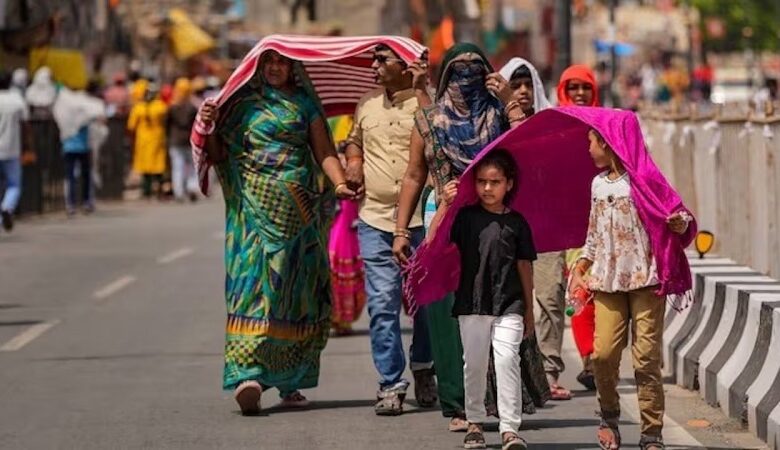North India Braces for Intense Heatwave: IMD Issues Red Alert

News Mania desk/Agnibeena Ghosh/27th May 2024
The India Meteorological Department (IMD) has issued a ‘red alert’ for sustained heatwave conditions across several northern states, including Delhi. The warning highlights the severity of the current weather conditions and the urgent need for precautions to mitigate the impact.
“Heatwave conditions will prevail in Rajasthan, Punjab, Haryana, Delhi-NCR, west Uttar Pradesh, and Madhya Pradesh for the next two days. After that, there will be a slight drop in temperatures,” stated Dr. Naresh Kumar, a senior scientist at IMD. The forecast indicates that extreme heatwave conditions will persist in these regions until May 27, with a gradual decrease expected thereafter.
Additionally, states like Chhattisgarh, Himachal Pradesh, and Uttar Pradesh will experience heatwave conditions until May 30, while Madhya Pradesh and Jammu will see similar conditions until May 29. Gujarat is expected to face hot and humid weather until May 31, and Bihar on May 28. These prolonged periods of extreme heat pose significant risks to public health and safety.
The IMD has also reported progress in the southwest monsoon, which is expected to reach Kerala by June 1. Within five days, the monsoon is likely to cover Pondicherry and Tamil Nadu, bringing much-needed relief to these regions. The monsoon’s advancement is anticipated to bring positive weather conditions to Lakshadweep, Kerala, and the northeastern states during this period.
In addition to the heatwave alerts, the IMD has noted the impact of Cyclone Remal, which made landfall over coastal Bangladesh and bordering coastal West Bengal. The region experienced light to moderate rainfall, with heavy to very heavy rainfall in some sub-Himalayan districts on May 27 and 28. Northeastern states like Assam, Meghalaya, Arunachal Pradesh, Nagaland, Mizoram, Manipur, and Tripura are also likely to experience varying degrees of rainfall, with heavy to severe rainfall expected in West Bengal, Meghalaya, Sikkim, Assam, Mizoram, Manipur, Tripura, and Arunachal Pradesh on May 28. Squally winds reaching speeds of 40-50 kmph are forecasted for Assam and Meghalaya until the afternoon of May 28.
The persistent heatwave conditions necessitate immediate actions to protect vulnerable populations. High temperatures can lead to heat-related illnesses such as heatstroke, dehydration, and exacerbation of pre-existing health conditions. Public health advisories recommend staying indoors during peak heat hours, staying hydrated, and avoiding strenuous activities.
Local authorities and communities should work together to ensure that emergency services are prepared to respond to heat-related incidents. Cooling centers, accessible drinking water, and public awareness campaigns can help mitigate the adverse effects of extreme heat. It is also crucial to support farmers and those working outdoors, providing them with resources and guidance to manage their health and safety.
Looking ahead, the anticipated arrival of the monsoon offers a glimmer of hope. The monsoon season is vital for replenishing water supplies, supporting agriculture, and providing relief from the intense heat. However, it also brings challenges such as potential flooding and landslides, necessitating preparedness and responsive measures from both government and communities.
In conclusion, the current heatwave and subsequent weather patterns underscore the importance of robust meteorological services and effective public health strategies. The IMD’s timely warnings and forecasts play a critical role in helping communities prepare for and respond to extreme weather conditions. As North India braces for continued heat, collective efforts to safeguard health and well-being are paramount.
The transition from heatwave conditions to the monsoon season will require vigilance and adaptability. Ensuring that infrastructure, emergency services, and community support systems are equipped to handle these changes is essential. By staying informed and taking proactive measures, we can mitigate the impact of extreme weather and protect our communities.






